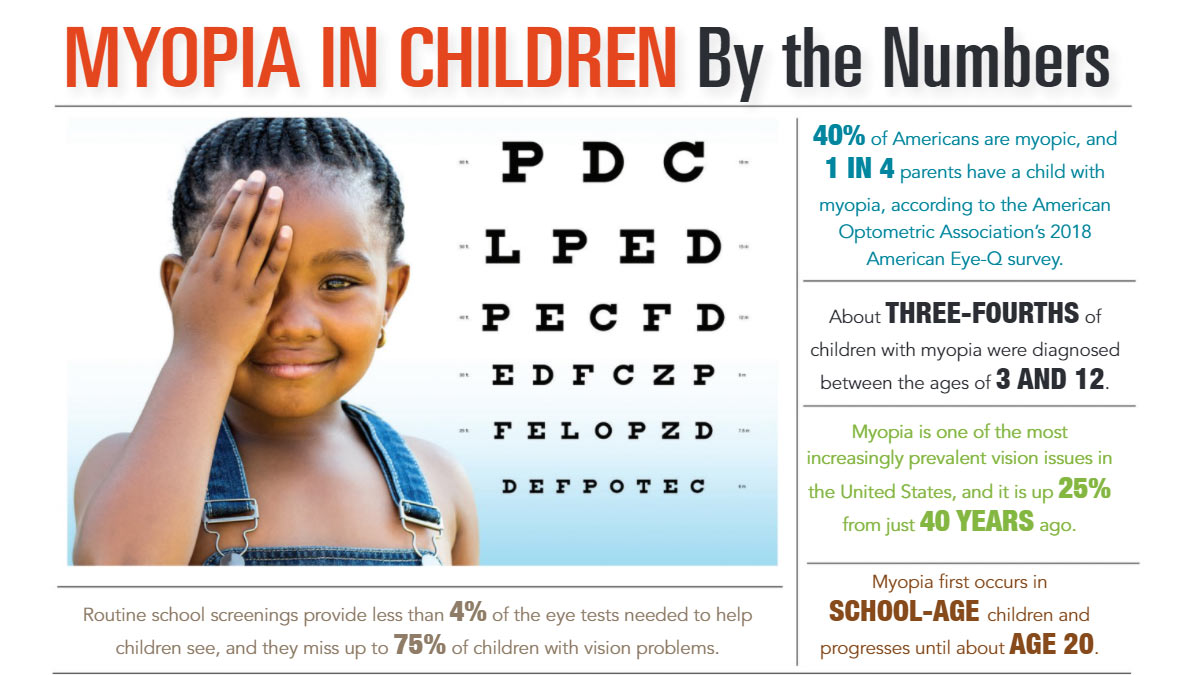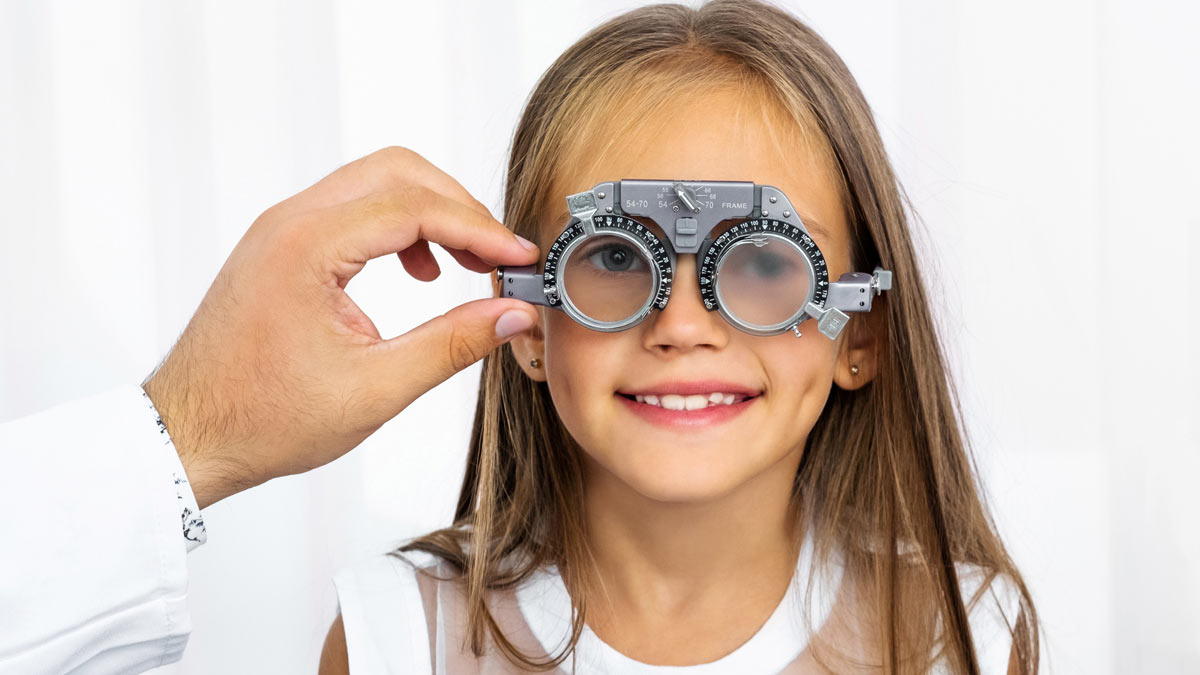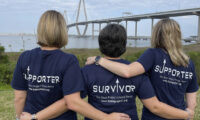Squinted eyes while watching television, a tablet or book a bit too close to the face and complaints of headaches – parents are quick to observe unusual behavior in their kids. When these signs begin, Mom and Dad might find themselves with an unexpected diagnosis: pediatric myopia, known in simpler terms as nearsightedness, which begins in childhood.
Myopia is a condition that occurs when the eye is slightly elongated or the focusing power of the cornea is too strong, resulting in improperly focused light on the retina and blurry distance vision. Many are familiar with the condition in adults, and, according to Dr. Peter Knowlton of Carolina Eyecare Physicians, the primary difference is kids’ eyes “have high accommodative, or focusing, power due to their young, pliable natural lenses. Therefore, children can focus through low levels of myopia and are often asymptomatic. In contrast, adults have much weaker accommodative power and typically exhibit more obvious symptoms.”
“Myopia typically develops as the eye grows and is uncommon prior to the age of 8,” continued Dr. Knowlton. “If it develops prior to this age, the child has a greater likelihood of eventually developing high or pathologic myopia,” which can cause greater complications later in life.
Similarly, Dr. Samuel Johansen of Johansen Precision Eye Care in Greenwood and Newberry indicated the importance of proactive care. According to Dr. Johansen, 99% of adult cases of myopia first develop in childhood.
“Studies are showing there is something we can do to keep it from getting worse,” he stressed. “As it forms, myopia continually advances until age 18 to 20, so the goal is to slow the growth – not completely stop it but significantly reduce its progression.”
Early detection is key. Consequently, Dr. Johansen recommended bringing children as young a 1 year to an eye care provider and continuing with vision tests annually.
Myopia is more than an inconvenience. Because it makes it difficult to see objects far away, a child’s everyday activities are affected: seeing the board or teacher at school, playing sports, even watching television. As myopia worsens, children may squint or experience mild headaches with when using their distance vision for an extended period of time. The good news is there are successful treatment plans available. Glasses are by far the most common approach, while contact lenses are best for young myopic athletes. Beyond this, low-dose atropine drops may also be an option. While normally used to dilate eyes, a diluted version has been shown to prevent the eye from growing excessively long in addition to significantly slowing myopia’s progression.
Parents still might be wondering what can be done to prevent the onset of myopia. Dr. Johansen warned that studies are showing it is on the rise throughout the world. With the increase of technology and extensive time spent staring at computer screens and video games, kids are using more of their vision up close and spending less time outside.
“Children should spend two to three hours of distance viewing daily – basically outside playing,” he stated. “And all things should be enjoyed in moderation when it comes to tech on tablets, ensuring the device is an arm’s length away.”
Dr. Knowlton likewise underscored the need for frequent breaks while studying and to avoid reading in low-light conditions. In the end, though, “the most important thing that parents can do is observe and listen to their children carefully and get them checked right away if a child’s vision appears to be changing.”
Both doctors agreed on the importance of a trustworthy and experienced provider who is well-versed with youngsters. Dr. Knowlton noted that prescriptions for patients who are too young to talk must be determined using retinoscopy, which doesn’t utilize the child’s input.
“This is a difficult skill to master and is usually best performed by a pediatric eye doctor,” he explained. “Distraction and attention-holding techniques are key for examining a young child, often requiring special equipment and a relatively speedy and efficient exam.”
Dr. Johansen concurred, advising parents to call a practice and ask how comfortable the providers are with seeing young children.
“I would only take my kids to a practice that accepts patients under the age of 6, even if my child is older. It shows where their focus is,” he said.
In the end, some children will inevitably be prescribed eyewear. When this happens, it is important that parents do not blame themselves. Instead, the best thing to do moving forward is simple: be supportive. Find a durable frame the child loves, emphasize how fabulous the child looks and simply make it an exciting experience.








